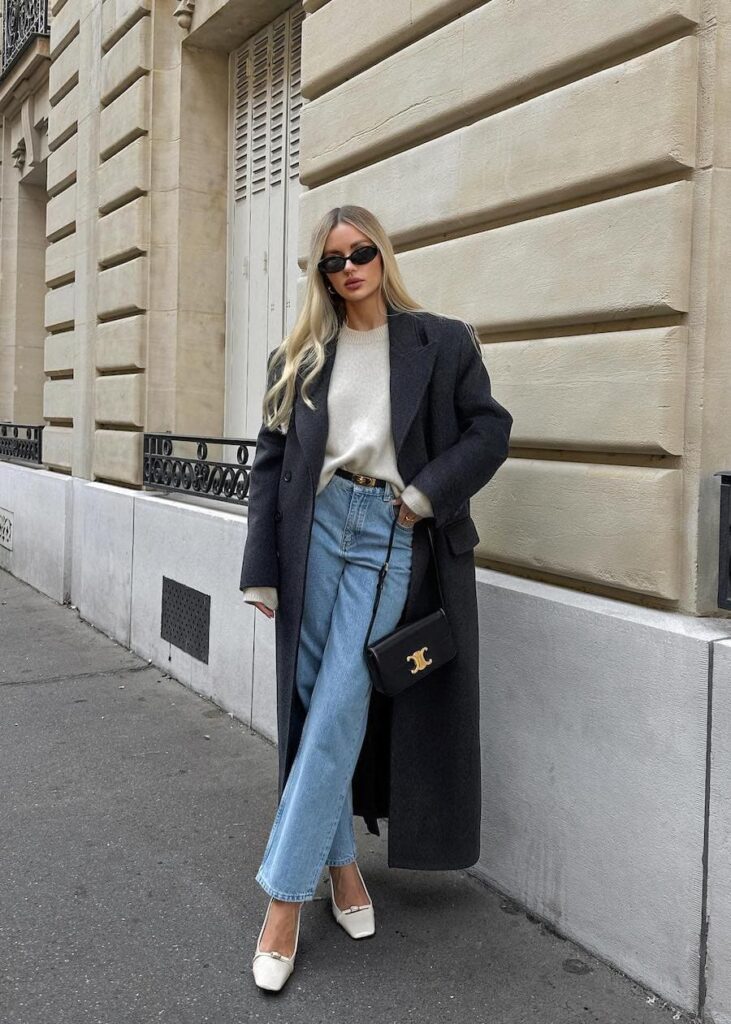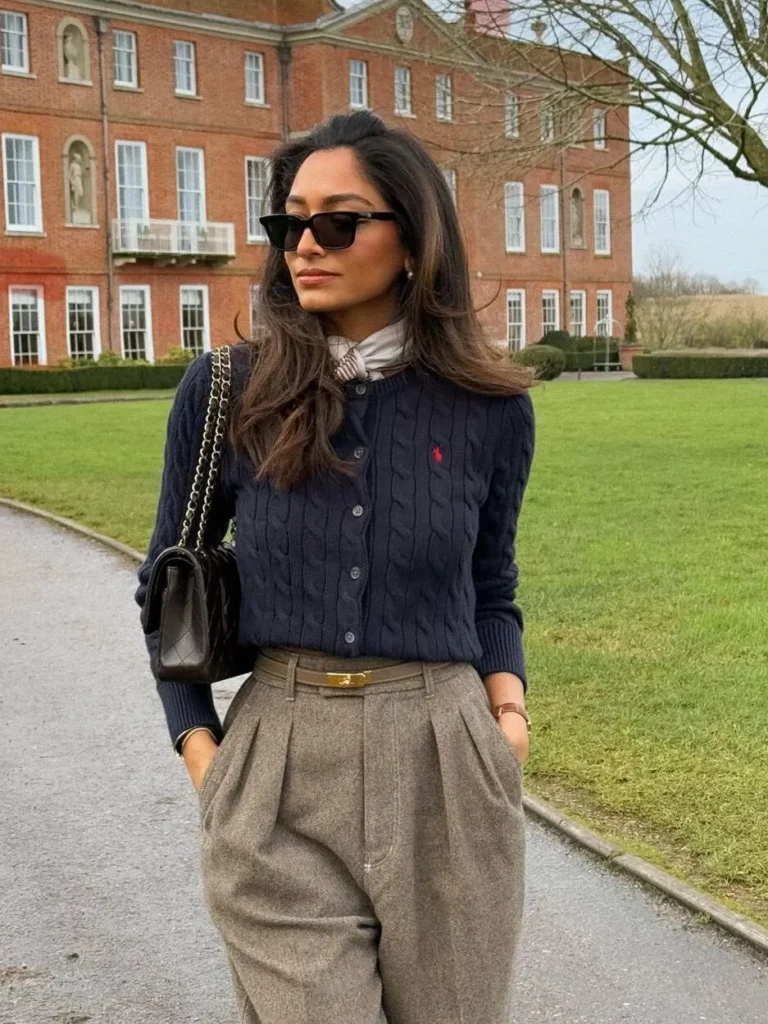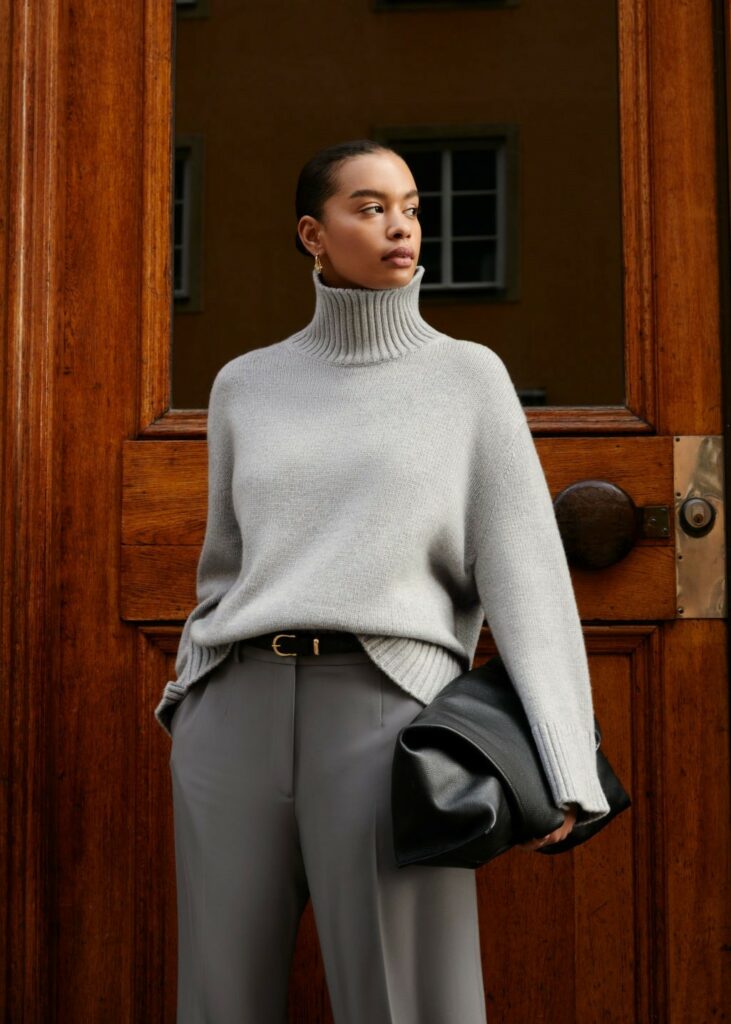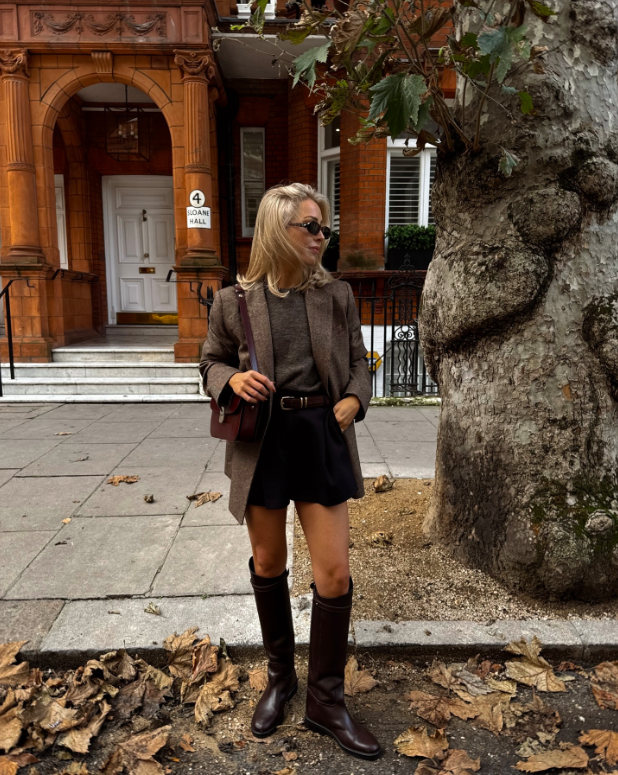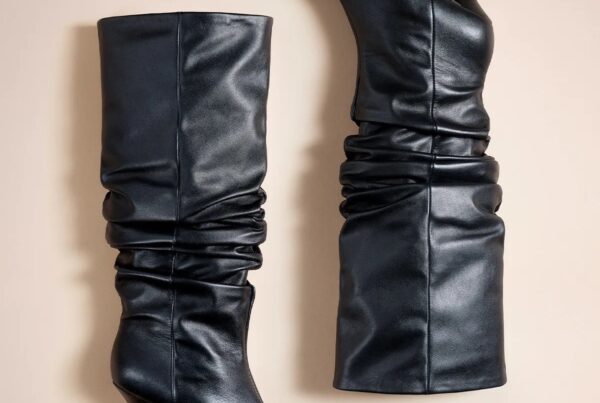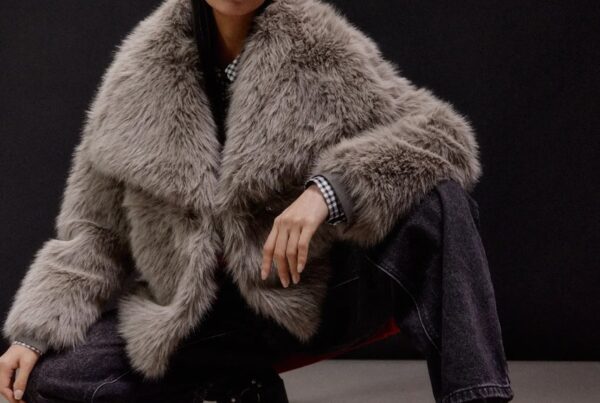Incorporating timeless fabrics and sophisticated color palettes into your wardrobe can significantly enhance your style and versatility, especially as seasons change. This article provides practical insights into selecting classic materials such as cashmere, wool, and velvet, as well as guidance on using color effectively to create elegant outfits.
By mastering these elements, you will not only build a refined and enduring wardrobe but also gain the confidence to express your personal style. Each section aims to address common struggles in achieving a cohesive look, ensuring you feel stylish and well-prepared for any occasion.
Table of Contents
Classic Fabrics for Autumn Elegance
As the leaves turn and a crisp chill fills the air, autumn presents the perfect backdrop for showcasing classic fabrics that embody elegance and sophistication. The right choice of materials can not only enhance your overall look but also ensure maximum comfort as you transition through the season. In this exploration of autumn’s timeless fabrics, we will delve into the luxurious textures and patterns that define the elegance of your fall wardrobe.
1. Luxurious Wool
Wool is a quintessential fabric for autumn fashion, revered for its warmth and versatility. Originating from sheep, this fabric comes in various weights, making it suitable for everything from cozy sweaters to sophisticated coats. The natural insulating properties of wool help regulate body temperature, ensuring you stay warm without overheating.
- Types of Wool: Consider opting for Merino wool, which is softer and finer, ideal for direct contact with the skin, or cashmere for that extra touch of luxury.
- Wool Blend Options: Fabrics blended with silk or cashmere not only enhance softness but also add a sophisticated sheen, perfect for formal occasions.
2. Timeless Tweed
Tweed is another iconic fabric that evokes a sense of tradition and classiness. Perfect for structured pieces such as blazers, skirts, and trousers, tweed is characterized by its rich texture and often intricate patterns. This fabric was originally developed in Scotland, making it deeply rooted in heritage fashion.
- Color Variations: Autumn’s color palette features earthy tones; choose browns, greens, and subtle plaids that resonate with the season’s natural beauty.
- Styling Tips: Pair tweed with chic silk blouses or cashmere turtlenecks for a refined look, suitable for both a day in the office and evening events.
3. Rich Velvet
When aiming for luxury and opulence, velvet is the choice of fabric that stands out. Its smooth, soft pile catches light beautifully, making it a compelling option for evening wear and special occasions. The plush texture provides warmth without sacrificing style.
- Color Choices: Embrace deeper jewel tones like emerald green, royal blue, or burgundy which add a dramatic flair that’s perfect for autumn.
- Layering with Velvet: Combine a velvet dress with a tailored coat to create a stunning silhouette that transitions seamlessly from day to night.
4. Elegant Silk
Silk, celebrated for its soft and luxurious feel, also deserves a spotlight during the fall season. While it’s typically associated with summer, silk’s natural sheen and ability to drape elegantly make it an excellent choice for layering in cooler weather.
- Perfect for Layering: Incorporate silk camisoles or blouses under heavier garments to create depth and texture in your outfit.
- Choosing Patterns: Opt for silk pieces with autumn-inspired prints like florals or paisley patterns that still allow for the elegant styling fitting for the season.
5. Cozy Cashmere
No autumn wardrobe is complete without the addition of cashmere. This luxurious fabric is known for its unparalleled softness and warmth. Cashmere sweaters and scarves are staples that not only keep you cozy but also elevate your style quotient.
- Investment Quality: While cashmere can be a more significant investment, its durability and timeless appeal make it a worthwhile addition to your wardrobe.
- Mixing Textures: Pair cashmere with leather or wool for a chic, layered effect that encapsulates classic autumn style.
Each of these classic fabrics introduces unique textures and visual appeal to your fall wardrobe. By thoughtfully incorporating wool, tweed, velvet, silk, and cashmere into your outfits, you can create a harmonious blend of comfort and elegance for the autumn season. Stay tuned as we explore other aspects of autumn fashion, from color palettes to expert layering techniques, that will further enhance your sophisticated style.
Timeless Color Palettes to Enhance Your Wardrobe
Color is an essential factor in creating a wardrobe that exudes sophistication and timelessness. Having a solid understanding of timeless color palettes can help you mix and match pieces effortlessly, ensuring your outfits remain chic and relevant no matter the season. This guide delves into various color palettes that can elevate your wardrobe and provide you with inspiration to make informed choices when selecting your clothing.
1. Neutrals: The Foundation of Timeless Style
Neutral colors are the backbone of any classic wardrobe. They provide versatility and allow for easy pairing with bolder hues, making them an essential component for creating countless outfits. A palette that includes shades like beige, grays, whites, and blacks can offer a clean and refined aesthetic. Here are some ideas on how to incorporate neutrals:
- Layering Basics: Use neutral colors as layering pieces. A beige trench coat or gray cardigan can seamlessly blend with almost any outfit.
- Statement Accessories: Choose neutral-colored bags and shoes that can ground brighter outfits, providing a balanced look.
- Ease in Pairing: Pairing neutral pieces allows you to play with different textures and patterns without overwhelming the eye.
2. Earth Tones: Nature’s Palette
Earth tones draw inspiration from the natural world and evoke a sense of warmth and grounding. Colors such as olive green, rust, terracotta, and deep browns fit seamlessly into a timeless wardrobe. These colors are especially popular for fall and winter, but they can easily transition into spring and summer with the right styling. To incorporate earth tones:
- Mix and Match: Combine different earth tones for a cohesive look. An olive green dress with terracotta accessories can be visually striking yet understated.
- Layering Techniques: For a polished look, layer neutral tops with earth-toned bottoms or outerwear.
- Natural Fabrics: Look for fabrics in earth tones that are sustainable and breathable, such as cotton or linen.
3. Pastels: Soft Yet Effective
Pastel colors can infuse your wardrobe with softness and whimsy while still remaining elegant. Shades like blush pink, baby blue, and soft lavender bring a refreshing touch. The key to successfully incorporating pastels is to balance them with more subdued tones or textures. Here’s how to style pastels:
- Accent Pieces: Use pastel shades for items such as blouses or accessories to lighten a darker outfit.
- Layering with Neutrals: Combine a pastel sweater with neutral pants for a chic and modern look.
- Seasonal Transition: Pastel hues work beautifully in spring, but they can also brighten up fall and winter outfits when layered effectively.
4. Jewel Tones: Bold and Luxurious
Jewel tones like sapphire blue, emerald green, and ruby red add a bold statement to your wardrobe, making them perfect for evening events or when you want to feel more glamorous. These colors shimmer with vibrancy and can enhance your overall complexion. Here’s how to wear jewel tones:
- Statement Pieces: Invest in jewel-toned dresses or blouses that can stand alone as a focal point while keeping the rest of your outfit neutral.
- Mixed Textures: Pair jewel-toned tops with different textures, such as a silk blouse with a velvet skirt.
- Accessorizing Wisely: Choose jewel-toned accessories to spice up neutral outfits without overwhelming them.
5. Monochromatic Styling: The Art of One Color
Monochromatic outfits create a striking visual impact. This styling technique involves wearing varying shades and textures of the same color, resulting in a sleek, elongated silhouette. Here are some tips for pulling off a monochromatic look:
- Vary Textures: Use different fabrics within the same color family to add depth. Think silk, wool, and denim all in shades of blue.
- Incorporate Accessories: Use contrasting textures or metallics in your accessories to break up the look while still maintaining the monochromatic feel.
- Play with Shades: Mix lighter and darker shades of the same color for a sophisticated gradient effect.
By thoughtfully incorporating these timeless color palettes into your wardrobe, you can create a collection of outfits that not only showcase your personal taste but also stand the test of time. Each palette serves as a foundation, allowing for versatility, creativity, and an enhanced sartorial presence.
Layering Techniques for Sophisticated Style
Layering is more than just a method of keeping warm; it is an art that allows you to express your personal style while adapting to varying temperatures and occasions. Mastering effective layering techniques can significantly enhance your wardrobe’s versatility, giving you the ability to mix and match various pieces while maintaining a sophisticated look. Here, we explore some essential layering techniques to achieve that polished style effortlessly.
Understand the Basics of Layering
Before diving into specific techniques, it’s crucial to grasp the fundamental principles of layering. These principles focus on utilizing varying textures, lengths, and weights to create a well-balanced outfit. Consider the following:
- Base Layer: This is the first layer, typically consisting of fitted tops or lightweight shirts that sit close to the skin. Opt for breathable fabrics like cotton or merino wool to ensure comfort.
- Middle Layer: The middle layer serves to provide insulation. Think sweaters, cardigans, or blazers made from materials such as cashmere or thick cotton blends.
- Outer Layer: The outer layer is your visible layer and should be chosen based on functionality and style. This could be a classic trench coat, an elegant overcoat, or a structured jacket.
Choose the Right Fabrics
When layering, the choice of fabric can greatly affect the overall aesthetic and comfort. Textures play an essential role in achieving a sophisticated look. Some fabrics to consider include:
- Cashmere: Offers unparalleled warmth and softness, perfect for making any ensemble feel luxurious.
- Tweed: A classic fabric that adds depth and structure, ideal for transitional seasons.
- Satin and Silks: Best for accent pieces, these fabrics can elevate the intrigue of your outfit.
The combination of heavier and lighter fabrics will also help create visual interest while ensuring comfort throughout the day.
Play with Proportions
Mixing different lengths and shapes is a key principle of layering. This method can create a dynamic silhouette that flatters your figure. Here are some tips on how to balance proportions:
- Longer Underlayers: Pair a longer tunic or shirt with a fitted blazer or cropped jacket. This contrast allows for a sleek, elongated appearance.
- Oversized Meets Fitted: Combine an oversized sweater with straight-leg trousers or a pencil skirt. This juxtaposition avoids overwhelming your frame while maintaining a stylish flair.
- Varying Layer Lengths: Experiment with layering different lengths to create depth. A long cardigan over a tailored top can add elegance without being bulky.
Accessorizing for Impact
Accessories can play a vital role in layering, providing additional flair and sophistication. The right pieces can tie your outfit together beautifully. Here are some must-have accessories to consider:
- Scarves: A silk or chunky knit scarf can add texture and warmth, while also offering a splash of color or pattern to your layered look.
- Belts: Define your waist by adding a statement belt over your layers, accentuating your silhouette.
- Statement Jewelry: Bold necklaces or earrings can serve as focal points, elevating simple combinations into chic ensembles.
Layering is an effective technique that, when done correctly, not only enhances your outfit’s sophistication but also showcases your individual style. As you refine your layering skills, take inspiration from iconic fashion figures and current trends, integrating them into your wardrobe for a timeless look.
Accessorizing with Heritage Pieces for Lasting Impact
Accessorizing is a crucial part of personal style, and incorporating heritage pieces into your outfits can create a striking, lasting impact. Heritage accessories, often characterized by their quality, craftsmanship, and historical significance, offer more than just a style statement—they allow you to connect with tradition and showcase a unique narrative. Below, we explore strategies for integrating these timeless pieces into your wardrobe effectively.
The Allure of Heritage Accessories
Heritage accessories bring a rich, cultural essence to your look. Items such as vintage brooches, heirloom jewelry, or artisanal handbags often carry stories of heritage and artistry that mass-produced accessories simply cannot match. Here’s why you might choose to include them in your dressing:
- Unique Storytelling: Each piece has a story, evoking a sense of nostalgia and individuality.
- Quality Craftsmanship: Heritage items are usually crafted with meticulous attention to detail, ensuring longevity.
- Versatility: These pieces can elevate both casual and formal outfits, making them worthwhile investments.
Selecting the Right Pieces
Not all heritage accessories are created equal. Here are some tips for choosing the right items that will resonate with your personal style:
- Research the History: Understanding the background of your accessory can help you appreciate it more and integrate it thoughtfully into your wardrobe.
- Consider Versatility: Opt for pieces that can complement multiple outfits or occasions. Classic styles, such as a vintage watch or a structured leather handbag, tend to have broad appeal.
- Quality Over Quantity: Instead of amassing a collection of items, focus on acquiring a few high-quality pieces that you will cherish and use consistently.
Pairing Heritage Accessories with Modern Wardrobe Favorites
Integrating these classic accessories into your everyday attire can yield stunning results. Here are some style tips on how to balance heritage pieces with contemporary trends:
- Layer with Basics: Use simple, neutral outfits as a canvas to let your heritage accessories shine. For instance, a plain white shirt can create the perfect backdrop for a statement necklace or a brightly colored scarf.
- Mixing Eras: Don’t be afraid to blend vintage pieces with modern fashion. A retro brooch can instantly modernize a tailored blazer or an otherwise minimalist dress.
- Transitional Pieces: Select accessories that can seamlessly transition from day to night. A classic pair of pearl earrings can elevate a casual brunch outfit while remaining suitable for an evening event.
Iconic Heritage Accessories to Consider
Here are a few hallmark heritage accessories that can make a significant impact:
- Vintage Scarves: A silk scarf can be tied around the neck, used as a hair accessory, or even styled as a handbag embellishment.
- Brooches: These can be pinned to jackets, scarves, or hats, adding an artistic flair to any outfit.
- Artisan Jewelry: Handmade pieces from local artisans often have unique designs that tell a story of their own.
Sourcing Heritage Accessories
Finding authentic heritage pieces requires a bit of keen searching. Here are some tips on where to look:
- Antique Shops and Flea Markets: These places are treasure troves for unique heritage accessories. Take your time exploring and be open to unexpected finds.
- Online Marketplaces: Websites like 1stDibs or Etsy can provide access to carefully curated vintage items and artisan accessories from around the world.
- Local Artisan Fairs: Visiting local craft fairs or artisan markets can introduce you to handmade items and inspire support for your local community.
Incorporating heritage pieces into your wardrobe not only enhances your style but also allows you to embrace a piece of history with each wear. As fashion continually evolves, grounding it with these timeless accessories can make your personal style more profound and resonant.
Incorporating classic fabrics into your autumn wardrobe—such as wool, tweed, velvet, silk, and cashmere—can enhance your style while providing warmth and comfort. Invest in high-quality cashmere pieces to elevate your look, and consider mixing textures for a sophisticated layered effect. Additionally, embracing timeless color palettes like neutrals, earth tones, pastels, jewel tones, and monochromatic styles can create versatile outfits that seamlessly transition across seasons.
To further refine your personal style, master layering techniques by understanding the roles of base, middle, and outer layers, and play with proportions to create flattering silhouettes. Accessorizing with heritage pieces, such as vintage jewelry or unique artisan items, adds character and storytelling to your outfits. Look for quality accessories that can complement modern pieces, ensuring versatility without overwhelming your style.



